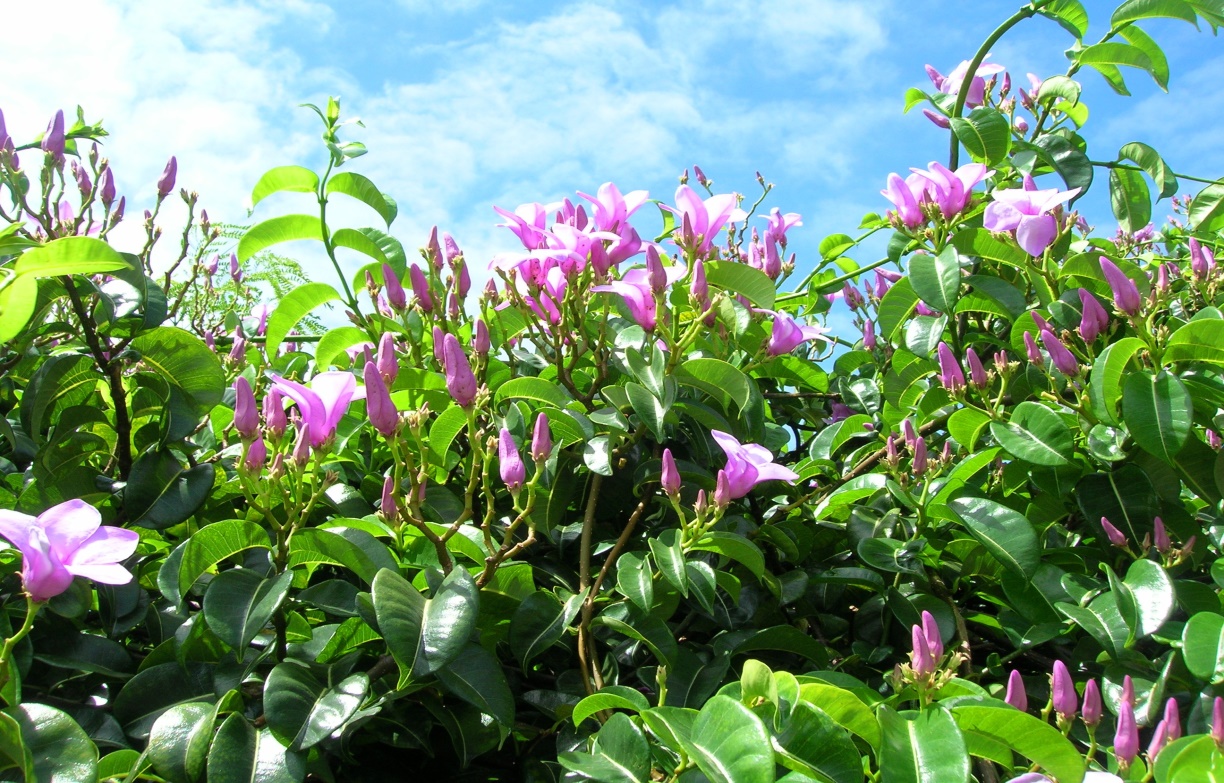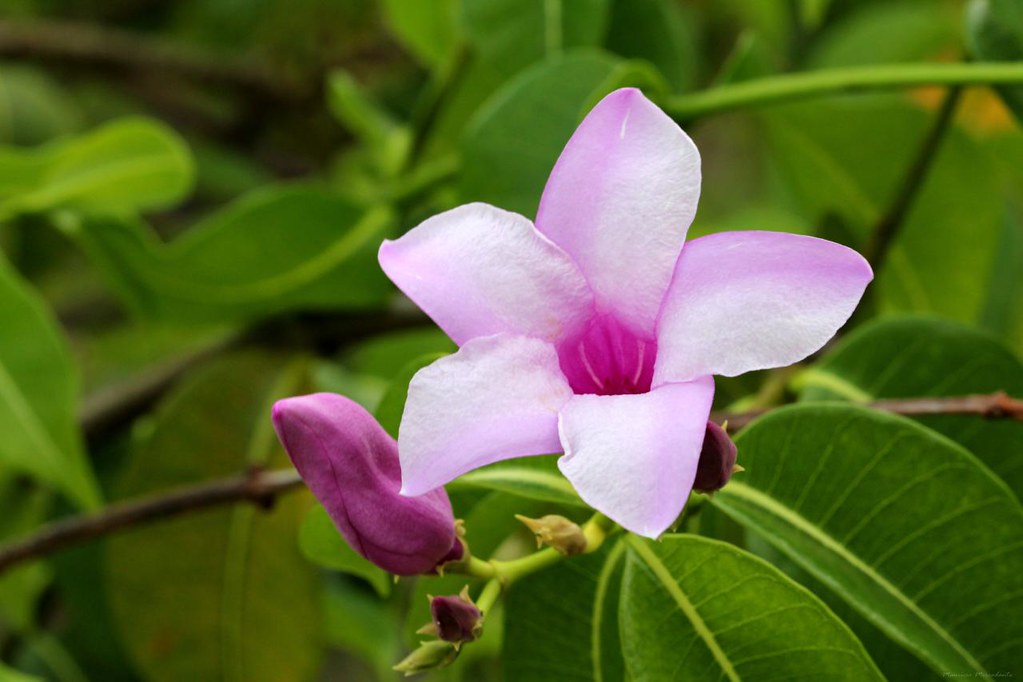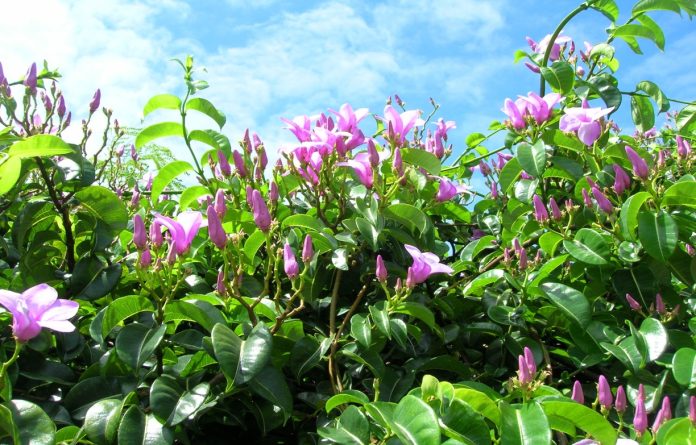Booking a magical glimpse inside Etnia Nativa
Article by Etnia Nativa call us 592 2702 and book your experience!
Each week, Island Insight shares with you one story of Aruba through the eyes of Etnia Nativa, a native venue that welcomes curious visitors to a unique cultural island experience and connects them with the mystical aspects of its native culture and its colonial heritage. Since that educational glance in this episode, shares about a poisonous, climbing, invasive, but beautiful plant: “Cordon di San Francisco,” an invasive introduction.

Over time, on Aruba, different plants, for many different reasons, with characteristics adaptable to our soil and our climatic conditions, were introduced. Some of them originate from Madagascar, a big island close to the African continent in the Indian Ocean. Like fruit trees such as the tamarind, ornamental flowering trees like the beautiful flamboyant, various colors of periwinkles, and our subject, the rubber vine known locally as the Cordon di San Francisco, to name a few. The condition of our island and the constant search for a profitable industry for its inhabitants were the main reasons for these kinds of ventures. The introduction of rubber was exactly the reason to introduce this plant: to extract its commercially qualified sap for the rubber industry.
Its latex contains commercial-grade rubber, hence its English name, “rubber vine.” The latex obtained from the stems can be used to make rubber. It is equal in quality to the latex obtained from the rubber tree. This plant has abundant milky juice, which, when exposed for a short time to the sun, is converted into pure caoutchouc. A fiber is obtained from the stems. It is said to be a fine, strong fiber, resembling flax that may be spun into the finest yarn.
“Cordon di San Francisco” (Cryptostegia grandiflora) is a perennial woody vine with very showy flowers. It climbs trees and bushes and everything that gets in its path: electricity poles, walls, fences, and roofs. Often, the plants are completely suffocated since they take over the surrounding vegetation. In different parts of the world, it is considered a very invasive weed that has to be eradicated.

“Cordon di San Francisco,” a.k.a. “rubber vine,” is highly poisonous; it is extremely unpalatable, and thus, grazing animals in places where this plant grows usually avoids it. It contains glucosides that interfere directly with heart function. Different studies indicate it is used as a poison for vermin.
This invasive plant has adapted perfectly throughout the Caribbean. After the rainy season, if you’re going to walk through the island, you will be surprised by the attractiveness of its beautiful flowers.
Its seeds germinate after the first rains and are dispersed by the winds. accelerating its growth a few days later. If enough water is available, rubber vines can grow extremely fast, up to five meters in a month. While the primary dispersion is a few meters from the mother plant, Aruba’s wind plays a predominant role in the dispersion of its seeds. Studies have proven that winds can extend their dispersion up to ten kilometers.
Normally, the San Francisco cordon( cordon in Papiamento lenguage means rope) can grow up to 2 meters (6 ft 7 in) tall as a shrub, but when supported by other vegetation such as a vine, it can reach up to 30 meters or 100 feet long.
Although it prefers areas where annual rainfall is more abundant than what usually falls on our island, you will be surprised to see how invasively it expands over all types of shrubs, trees, and cacti with great lightness just after a few raindrops.
If your itinerary includes knowing all about Aruba, Etnia Nativa is your only choice—a unique native gem where Anthony, our main cultural columnist, will guide and lecture you on the most interesting and revealing stories of the island. Get ready for a learning adventure and enjoy Aruba beyond the beaches. His magnificent museum-home dwelling integrates reused materials with nature, bursting with culture and island heritage. Commendatory! Whats App +297 592 2702 etnianativa03@gmail.com




















